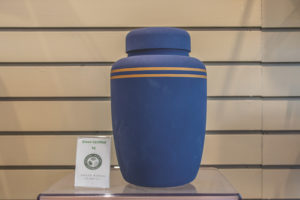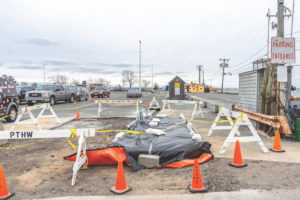Efforts to accommodate those looking for a more back-to-nature form of burial, known as green burial, continue to move ahead on the Outer Cape, but there’s been a bit of a learning curve along the way.
Provincetown adopted new regulations more than a year ago, designating 30 plots in the Alden section of the municipal cemetery for green burials. After a single burial, however, the ground at the grave sank, making it evident that, given the area’s sandy soil, adjustments to the regulations would be needed.
The Provincetown Cemetery Commission is expected to finalize proposed changes in August, hold a public hearing, then go to the select board for approval. Plots likely won’t be available for sale until September or October.
Green burials do away with the use of heavy metals and varnished caskets, formaldehyde to preserve the body, and concrete vaults to hold the casket and stabilize the soil around the grave.
When it comes to the details of a green burial, there are a range of options. The deceased may be wrapped in a shroud of natural fabric or placed in a box constructed of biodegradable material such as cardboard or pine. Family and friends sometimes dig the grave themselves and hand-lower their loved one into it. Some green cemeteries allow for flat identification markers, often a small disk, while others don’t allow markers of any sort.
Dawn Walsh, a Provincetown cemetery commissioner and co-founder of the Lily House, a community home for living and dying that will open in Wellfleet, said Provincetown is essentially a sand spit. For that reason, graves require “a backfill of three to five feet,” Walsh said. “That’s just standard.”
But the green gravesite requires much more. “Because we are so sandy, it became untenable to continue to backfill,” Walsh explained. The problem is that, “when opening adjacent graves, there would be nothing to hold things up.”
While green burials normally don’t use concrete vaults, the Provincetown Cemetery Commission has included the use of a three-sided vault in its new rules. Its top and sides prevent cave-ins, but since the vault has no bottom, the body would be in contact with the earth, so the natural decomposition process can occur.
According to the new rules, family and friends will not be allowed to dig or fill the graves in Provincetown. The work will be done by DPW staff, using a metal dig box to keep the sides of the grave stabilized.
The cemetery commission in Wellfleet was working on a draft of new cemetery rules modeled on Provincetown’s. “When they stopped, we stopped,” said Commissioner David Agger, who presented his fellow commissioners with a new draft last week for them to review and comment on.
The Wellfleet draft designates the northeast corner of the town’s Oakdale Cemetery for green burials. Hand opening and closing of the grave may be done by friends and family under the watchful eye of cemetery staff, or it can be dug by machine. Graves must be a minimum of four feet deep, and no vaults are allowed in the current draft.
Meanwhile, green burials have been done for years in the privately owned South Wellfleet Cemetery, which dates to the 1600s. There is no designated area for green burial. It can be done anywhere.
The cemetery is currently under the umbrella of the nonprofit South Wellfleet Neighborhood Association. According to Chuck Cole, the latest in the Cole family to oversee the cemetery, there are no regulations. “Once people buy their lots, they can do anything they want,” Cole said. “It’s a do-it-yourself cemetery. We have a ‘laissez faire’ system.”
The old sections of the cemetery are all green burials, since formaldehyde came into use only in the Civil War era. Since then, cremation and full body traditional burials in metal and varnished caskets have been the most common methods used, but green burials have been allowed as well.
“Green was never huge, but right now, that’s where the interest is,” Cole said. Sinkage at the site has never been a problem, thanks to the density of the soil. The three-acre property follows its natural topography, with grassy hills and slopes throughout. While small areas are cleared for heavy machinery, it’s not the kind of cemetery one would drive through, since there are no roads. It’s up to the owner to maintain the family plot or let it grow wild.
Lots are just starting to be purchased in a small wooded section by people interested in green burial, said Cole.
Walsh said she participated in a “full green burial” at the South Wellfleet Cemetery last spring. There was a cardboard coffin and no vault, and the unembalmed body was hand-lowered into the grave. Walsh said such burials help people with their grief.
“These practices allow for family and friends to have a very participatory experience of burying a loved one,” she said.
Eastham’s municipal cemeteries have no more room for burials, but Evergreen Cemetery, a private operation, plans to offer green burial sites “as soon as we have enough information to determine the proper area to locate them on the property,” said Jared Collins, the cemetery board president and a member of the Eastham Select Board. The cemetery is already taking reservations for people looking to secure green burial plots.
The cemetery board is planning outreach sometime this fall, hosting an event for those interested in green burial, Collins said. Lots will likely be available next year, he said.


